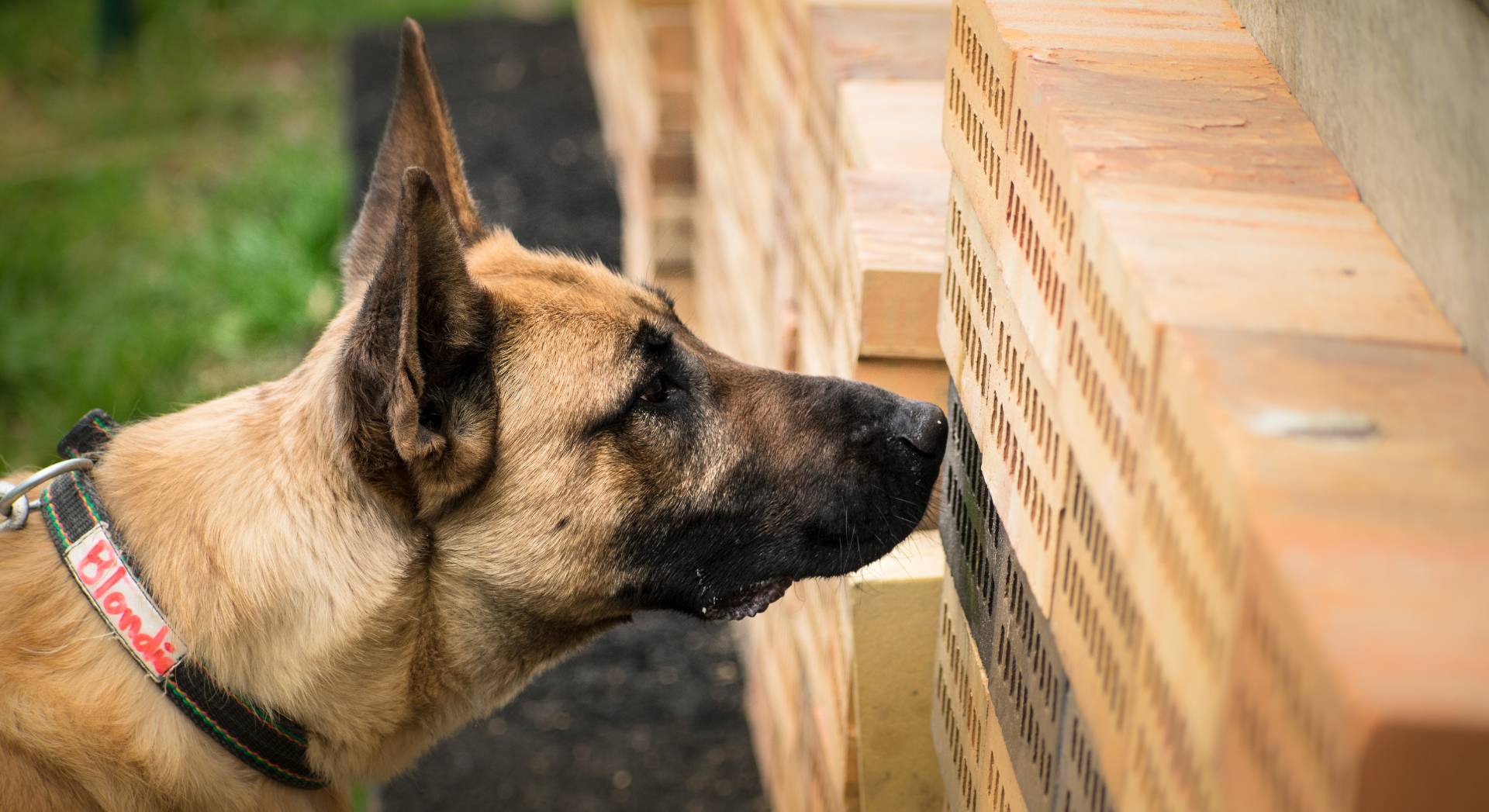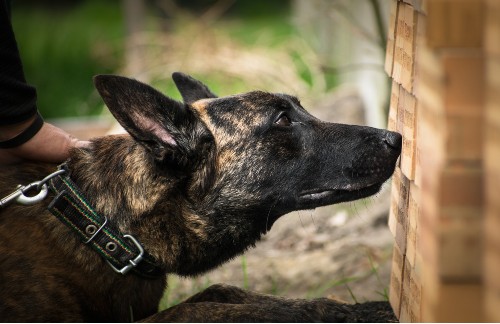How to Train Working Dogs: A Comprehensive Guide
Training working dogs is both an art and a science. These intelligent animals are bred and trained to perform specific tasks that assist humans, from search and rescue to herding livestock or guiding the visually impaired.
The key to effective training lies in understanding the breed, the task at hand, and employing positive reinforcement techniques that build a strong bond between handler and dog. Whether you’re training a service dog, herding dog, or police K9, this guide will walk you through the essential steps for training working dogs.
Training K9 working dogs is an intensive process that requires discipline, consistency, and patience. Here are the most important points to consider when training these dogs:
1. Selecting the Right Dog
- Breed: German Shepherds, Belgian Malinois, and Dutch Shepherds are often preferred due to their intelligence and strong work ethic.
- Temperament: Choose a dog with the right balance of confidence, curiosity, and self-control.
- Physical Health: The dog must be physically capable of handling demanding tasks.
2. Basic Obedience
- Commands: Sit, stay, down, and come are essential foundational commands before moving on to specialized training.
- Positive Reinforcement: Reward good behavior with treats or playtime.
3. Bonding with the Handler
- A strong bond between the dog and handler is crucial for effective teamwork.
- Trust and Respect: Must be mutual between the handler and the dog.
4. Specialized Training
- Tracking and Detection: Dogs are trained to detect specific scents (like drugs, explosives, or missing persons).
- Bite Work: Dogs learn to apprehend suspects by biting and holding, without excessive aggression.
- Protection: Dogs should be able to protect their handler or a designated area from threats.
5. Behavioral Control and Self-Discipline
- Aggression Management: Dogs need to learn how to display aggression when needed, but also to disengage immediately on command.
- Socialization: Dogs should become accustomed to different environments, people, and animals.
6. Physical Conditioning and Stamina
- Daily Exercise: Regular physical activity is essential to maintain strength and endurance.
- Playful Training: Include fun elements like fetching or obstacle courses to keep the dog mentally and physically stimulated.
7. Repetition and Skill Maintenance
- Constant Repetition: Ensure that learned skills are practiced regularly.
- Keeping Skills Current: Continuous training is necessary to maintain proficiency.
8. Mental Stimulation
- Intellectual Challenges: Use puzzles and search games to keep the dog mentally sharp.
9. Patience and Consistency
- Training a K9 takes time and dedication. Consistency in commands and rewards is key.
10. Health and Well-being
- Nutrition: Provide a balanced diet to support the dog’s energy levels and overall health.
- Regular Vet Visits: For preventive care and to detect any injuries or illnesses early.
The goal is to develop a reliable, well-trained, and controlled dog that can perform effectively in high-pressure situations
Understanding the Role of Working Dogs
Working dogs are more than just pets; they are skilled partners that take on crucial responsibilities. Breeds like German Shepherds, Border Collies, Labrador Retrievers, and Belgian Malinois have been developed over centuries for their intelligence, agility, and strong work ethic.
Some of the most common types of working dogs include:
- Service dogs: Assist people with disabilities, such as guide dogs for the blind.
- Search and rescue dogs: Trained to find missing people in various terrains.
- Herding dogs: Help manage livestock on farms, often using keen instincts and speed.
- Detection dogs: These dogs are trained to sniff out substances like drugs, explosives, or even diseases like cancer.
- Police and military dogs: Used for various tasks including protection, tracking, and apprehending suspects.
Each of these roles requires a tailored training regimen that plays to the breed’s strengths and abilities.
Selecting the Right Breed for the Task
Choosing the right breed is essential. For example, if you’re training a dog for herding, you’ll want to look at breeds like Border Collies or Australian Shepherds, known for their high energy and herding instincts. Conversely, Labrador Retrievers or Golden Retrievers make excellent service dogs due to their gentle temperament and intelligence.

Some key considerations when selecting a working dog breed:
- Temperament: The dog should have a calm, focused temperament for tasks like service work. More energetic and bold dogs are suited for police or military roles.
- Trainability: Certain breeds are naturally more eager to please and easier to train. Breeds like German Shepherds are renowned for their quick learning capabilities.
- Physical stamina: Working dogs often need to work long hours under challenging conditions. Breeds with high energy and endurance are ideal for tasks such as search and rescue.

The Importance of Socialization
Before any formal training begins, socialization is a critical foundation. Working dogs must be comfortable in various environments and able to handle stress calmly. Whether they are guiding a visually impaired person in a busy city or working alongside police officers during a raid, a well-socialized dog remains focused and composed.
Start socializing your dog early by exposing them to:
- Different environments: Take your dog to various locations such as parks, crowded streets, and even indoor settings.
- Various sounds and smells: Working dogs must not be startled easily, so introduce them to loud noises, different smells, and various stimuli gradually.
- Other animals and people: Help your dog become accustomed to both humans and other dogs to minimize distractions during work.
This process should be gradual and consistent, reinforcing positive behavior with treats and praise.
Basic Obedience Training: The Foundation of Success
No matter what kind of working dog you are training, basic obedience is essential. This lays the groundwork for more complex tasks and ensures your dog follows commands reliably.
Key obedience commands every working dog should learn:
- Sit: A basic command to have the dog stay in one place.
- Stay: Teaching the dog to remain still until given another command.
- Come: The recall command ensures your dog returns to you when called.
- Heel: Walking beside you without pulling on the leash is essential for tasks like guiding.
- Leave it: A crucial command for detection dogs, ensuring they don’t touch or interact with dangerous substances.
Positive reinforcement methods work best in obedience training. Reward your dog with treats, toys, or praise whenever they follow a command. Avoid punishment, as it can cause fear and confusion, reducing the dog’s trust in you.
Advanced Task-Specific Training
Once your dog masters obedience, it’s time to focus on task-specific training depending on the role they will fulfill.
1. Service Dog Training
Service dogs require patience and precision, as they must perform tasks that directly assist their handler, such as retrieving objects, opening doors, or alerting to a medical issue.
Training tips for service dogs:
- Focus on task-specific commands: For example, a dog trained to assist a person with mobility issues might learn to push buttons or fetch objects on command.
- Stay calm under pressure: These dogs must remain focused in noisy, crowded environments. Gradually expose them to these settings while reinforcing calm behavior.
- Public access training: Service dogs often accompany their handlers in public places, so they must be trained to remain by their handler’s side without getting distracted.
2. Search and Rescue (SAR) Dog Training
Search and rescue dogs must rely on their powerful noses and ability to follow scent trails in diverse conditions like forests, mountains, or disaster zones. SAR training includes teaching the dog to track scents and alert handlers when they find a person.
Key components of SAR dog training:
- Scent work: Introduce your dog to different scents by using objects with a strong smell (such as clothing), and reward them for identifying and following the scent.
- Environmental adaptability: Your dog should be comfortable working in challenging environments, such as rocky terrain, forests, or snowy conditions.
- Alert signals: Teach your dog a clear way to signal when they have found someone, whether through barking or returning to the handler and leading them to the location.
3. Detection Dog Training
Detection dogs, such as drug or bomb-sniffing dogs, rely on their heightened sense of smell to detect specific substances. This specialized training involves teaching the dog to identify particular scents and alert their handler.
Steps for detection dog training:
- Scent imprinting: Introduce your dog to the target scent using small, safe quantities and reinforce the correct identification with treats.
- Focused searching: Teach the dog to search methodically in various environments such as vehicles, luggage, or buildings.
- Indication training: The dog must give a clear signal, such as sitting or barking, when they detect the target scent.
Consistency and Patience in Training
Training a working dog takes time, patience, and consistency. Dogs thrive on routine and clear expectations. Establish a regular training schedule and stick to it, ensuring that you are consistent with commands, rewards, and consequences.
Some tips to ensure consistent training:
- Short, frequent sessions: Keep training sessions short (10-15 minutes) but frequent, ensuring that your dog doesn’t become frustrated or bored.
- Clear communication: Use the same words and signals for each command to avoid confusing your dog.
- Progress tracking: Keep a log of your dog’s progress. This will help you identify areas that need improvement and celebrate successes along the way.
Building a Strong Bond
A strong bond between handler and dog is vital for working dogs. Trust, respect, and mutual understanding create the foundation for effective training. This bond is especially important for dogs performing high-risk tasks, such as police or military work, where the dog’s life may depend on its ability to follow commands and trust its handler.
Ways to build a strong bond:
- Spend time outside of training: Play with your dog, go on walks, and give them affection. This helps build trust and ensures they see you as a reliable leader.
- Positive reinforcement: Always use positive reinforcement methods to encourage desired behaviors. This builds confidence in the dog and strengthens your relationship.
- Patience and empathy: Understand that every dog learns at their own pace. Be patient and avoid frustration if progress seems slow.
Final Thoughts: The Reward of Training a Working Dog
Training a working dog is a deeply rewarding process that results in a highly skilled and loyal companion. Whether your dog is destined to be a guide dog, search and rescue dog, or police K9, the key to success lies in understanding their role, using positive reinforcement, and consistently building your bond. Remember, training takes time, and each dog will progress at its own pace, but the end result is a well-trained dog capable of making a profound difference in people’s lives.
By investing in proper training, you’re not just teaching a dog to perform tasks—you’re creating a lifelong partner that will work tirelessly by your side.

